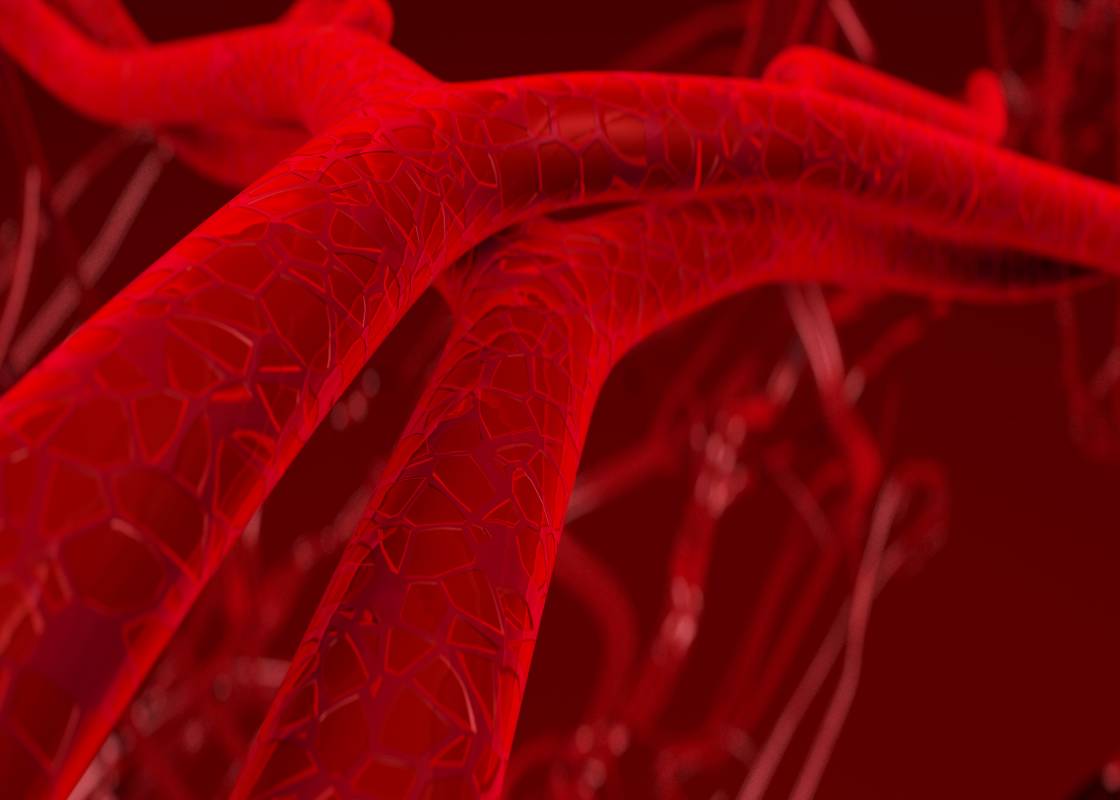Hemodynamics: What Does It Mean?

There are two common meanings of hemodynamics. Sometimes, when they say “hemodynamics,” people are referring to the fundamental measures of cardiovascular function [1]. Other times, it describes how well the blood flows through the veins and arteries of the body [1, 2]. As the latter definition is the more technical one and, thus, more consistent with professional usage, this article will center on hemodynamics as the description of blood flow.
How Does Blood Flow Through the Body?
As the heart beats, it pushes blood into the vessels, which creates a pressure difference between the atrial inlet and the ventricular outlet [3, 4, 5]. As occurs with all fluids, blood moves from high-pressure to low-pressure zones [6]. Therefore, as pressure increases in a given area, blood flow away from that area increases [4]. This is how blood flows from the heart to the arteries, capillaries, veins, and the heart once more [6].
Along with pressure, systemic resistance also affects hemodynamics [4]. The more resistance that blood vessels pose to the blood, the more difficult it will be for blood to pass through those vessels [4]. Consequently, the shape and size of vessels can impede or promote hemodynamic stability as well [4].
What Conditions Affect Hemodynamics?
Many medical conditions can impact hemodynamic stability. Cardiovascular conditions, such as age-related vascular disease and pulmonary hypertension, can impede blood flow [4]. Anxiety and stress can also have a negative effect on the body’s hemodynamics, given how these conditions are often associated with elevated blood pressure which, in turn, increases the load borne by the heart [4]. Substances that affect blood pressure, like aldosterone and angiotensin (I and II), may have an effect as well [4].
That said, it is important to dispel a common misconception. While high blood pressure can compromise hemodynamic instability, the measure of hemodynamics depends on more than just blood pressure [1, 2]. Therefore, the two concepts —blood pressure and hemodynamics— are not synonymous and should not be conflated [2].
What Are the Symptoms of Hemodynamic Instability?
The cardiovascular system is vital to the body and is linked to several other organ systems as well. Hemodynamic instability is a potentially dangerous situation that must be monitored and treated as best as possible. Common symptoms of hemodynamic instability include decreased urine output; cold or blue legs, feet, arms, or hands; chest pain; shortness of breath; restlessness; low blood pressure; abnormal heart rate; confusion; and loss of consciousness [7]. Because many of these symptoms are associated with other medical conditions as well, medical professionals may use hemodynamic monitoring tests to verify whether hemodynamic
instability is the true cause of their patient’s symptoms [8]. It is a non-invasive procedure that can be done in around three hours and permits professionals to identify and address problem areas [8].
Why Are Hemodynamics Important?
Blood plays several key roles in the body. It regulates metabolism, enables the immune system to protect against foreign bodies, and boosts energy [5]. Hemodynamic instability compromises the blood’s ability to supply these benefits [2]. As a result, it is a serious condition that warrants treatment.
References
[1] J. Fletcher, “What to Know About Hemodynamic Instability,” Medical News Today, Updated March 29, 2023. [Online]. Available: https://www.medicalnewstoday.com/articles/hemodynamic-instability.
[2] “Hemodynamics,” Cleveland Clinic, Updated August 9, 2022. [Online]. Available: https://my.clevelandclinic.org/health/body/24013-hemodynamics.
[3] “How Does Blood Flow Through Your Body,” Cleveland Clinic, Updated April 30, 2019. [Online]. Available: https://my.clevelandclinic.org/health/articles/17059-how-does-blood-flow-through-your-body.
[4] J. D. Pollock et al., “Physiology, Cardiovascular Hemodynamics,” StatPearls, Updated March 13, 2023. [Online]. Available: https://www.ncbi.nlm.nih.gov/books/NBK470310/.
[5] M. Thiriet, “Hemodynamics: An Introduction,” in PanVascular Medicine. Berlin, Germany: Springer-Verlag Berlin Heidelberg, 2015, ch.14, pp. 413-83. Accessed September 26, 2023. [Online]. Available: https://doi.org/10.1007/978-3-319-50610-4_3.
[6] “Physiology of Circulation,” National Cancer Institute. [Online]. Available: https://training.seer.cancer.gov/anatomy/cardiovascular/blood/physiology.html.
[7] “Hemodynamic Instability,” University of Miami Health System. [Online]. Available: https://umiamihealth.org/en/treatments-and-services/pediatrics/critical-care-(pediatrics)/hemodynamic-instability.
[8] “Hemodynamics Test,” Cleveland Clinic, Updated August 10, 2022. [Online]. Available: https://my.clevelandclinic.org/health/diagnostics/17094-hemodynamic-test.
